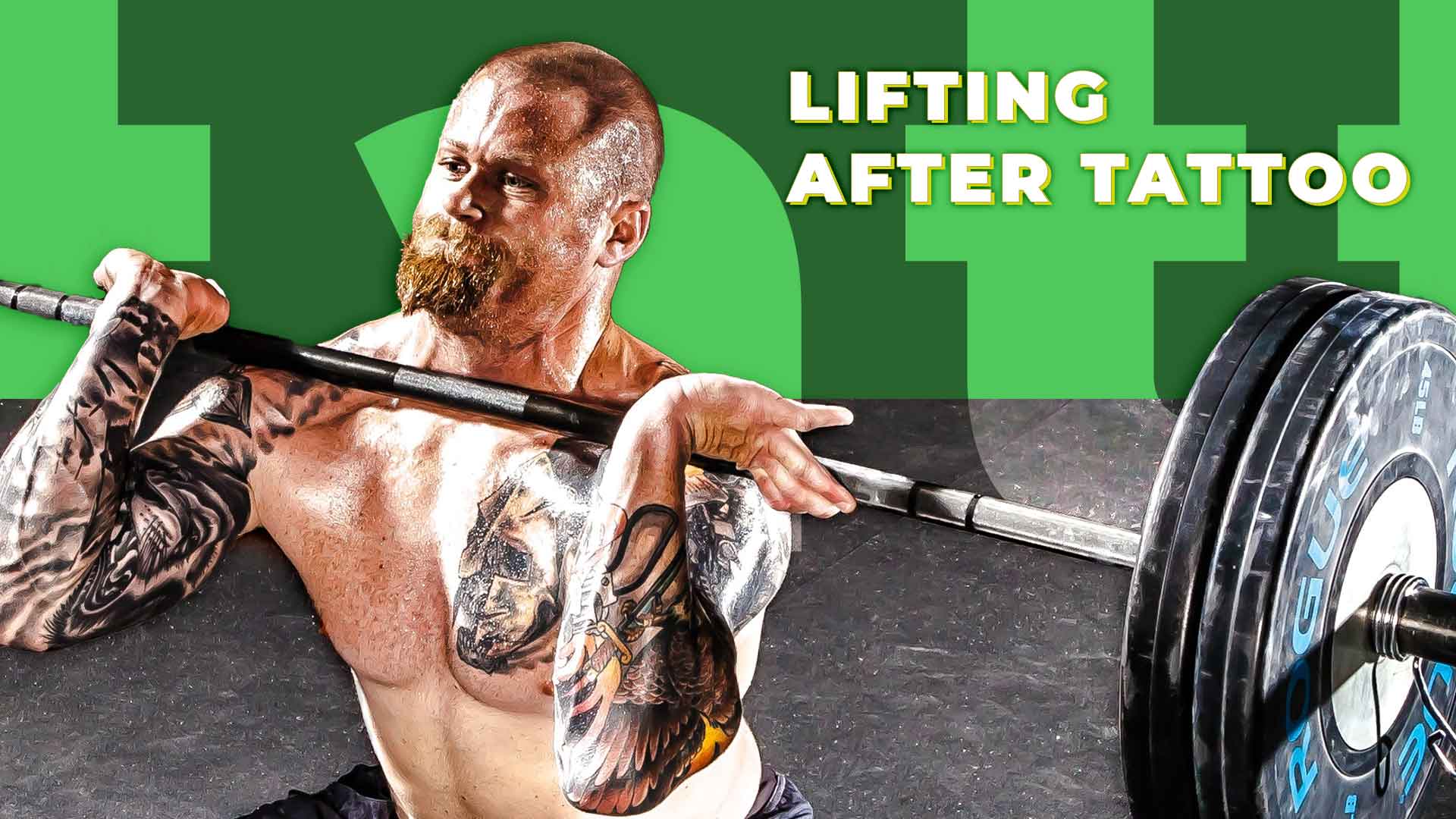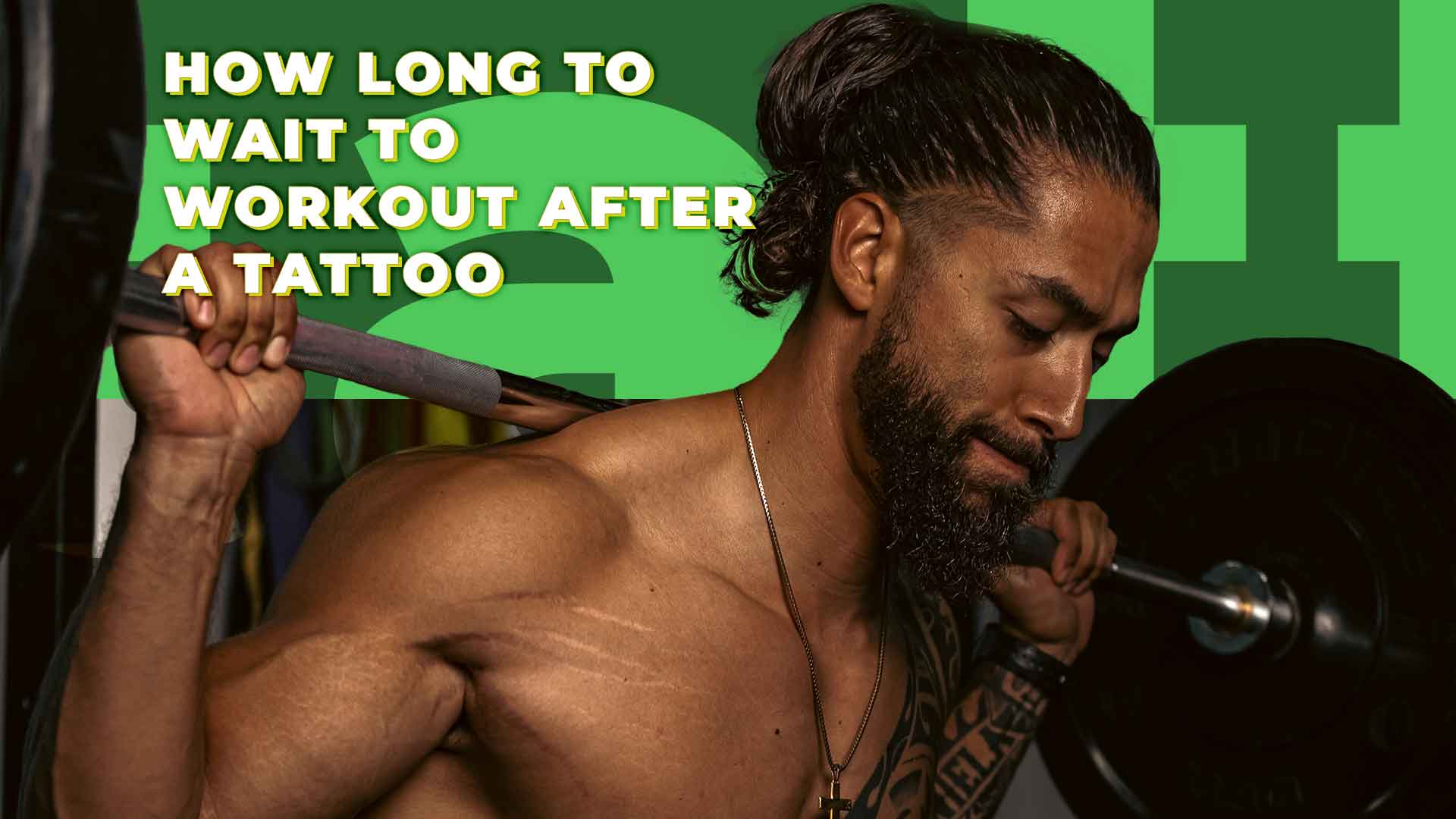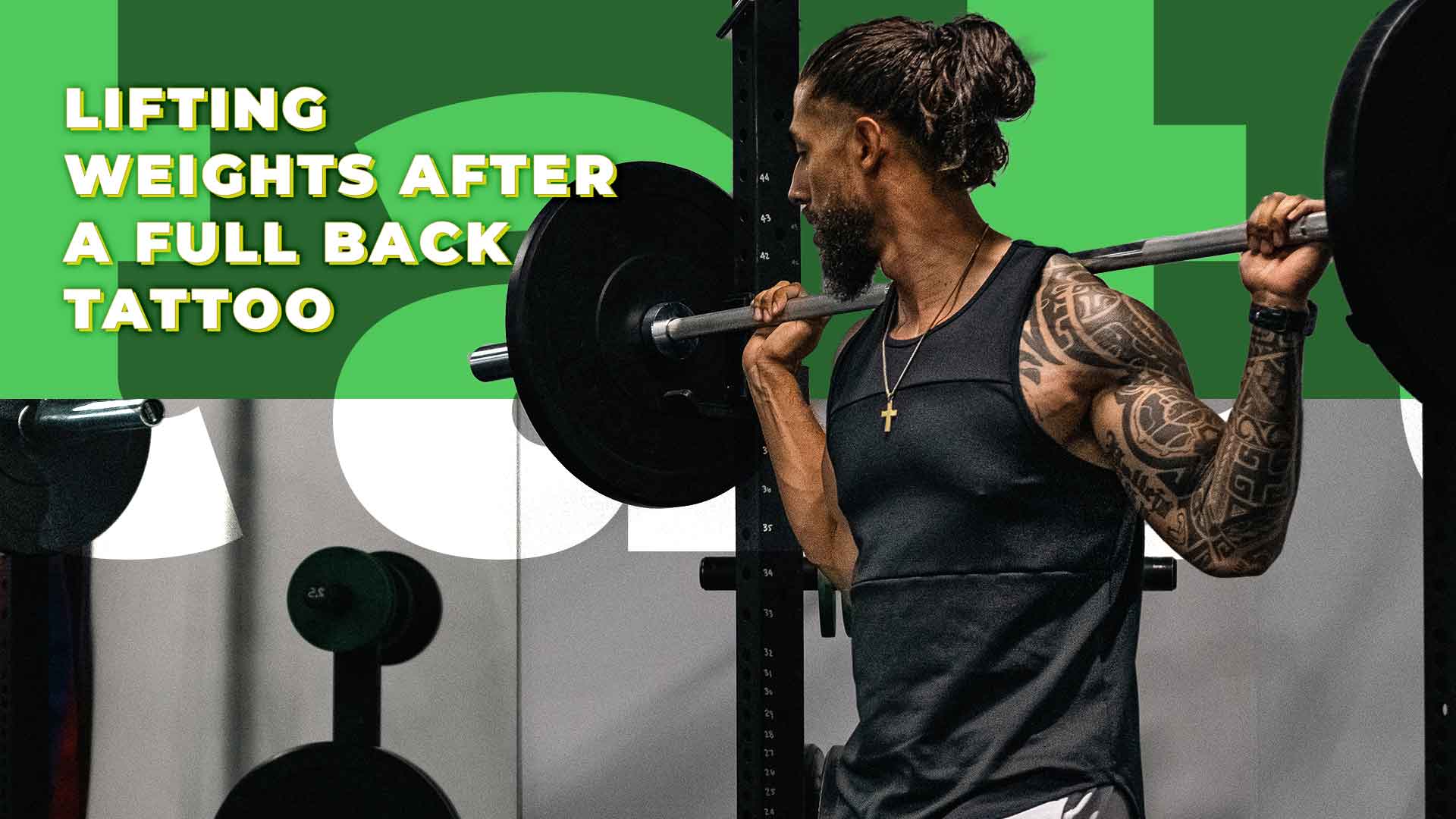Lifting weights after getting a tattoo can be a tricky question. As it depends on the stage of healing of your tattoo and the location of it on your body.
Getting a tattoo is an exciting experience. It is also a process that involves a certain level of trauma to the skin. Tattoo artists typically advise against engaging in strenuous physical activity until a tattoo is fully healed. This can be a challenge for those who are avid gym-goers.
So, is it safe to work out right after getting a tattoo? This article will provide the answer and help you adjust your exercise routine to ensure that your tattoo remains vibrant, sharp, and attractive. Here are a few guidelines to help you make an informed decision.
Why should you wait to workout after a tattoo?
There are a number of reasons to put a hold on your workout routine after getting a tattoo.
Open wound
The tattooing process involves breaking the skin with hundreds of tiny puncture wounds. Essentially, it’s an open wound. One of the ways that germs enter your body is through open skin. Gym equipment can harbor harmful bacteria.
Stretching and sweating
When you work out, your muscles stretch your skin and you sweat. Pulling the skin and excessively sweating in the area of your tattoo can interrupt the healing process.
Friction
The rubbing of clothing or equipment against a recently tattooed area can irritate the skin, rub off scabs, and interfere with proper healing.
Lifting after tattoo

The location of the tattoo on your body plays a significant role in determining whether it is safe to lift weights after getting a tattoo. If the tattoo is in an area not used during weightlifting, such as your back or thigh, it should not cause any significant issues. In such cases, you can return to weightlifting. Ensure the tattoed area is clean and moisturized. Try avoiding direct contact with gym equipment.
But, if the tattoo is in an area used while lifting weights, such as your bicep, chest, or tricep, you should avoid or limit the use of that muscle group to allow proper healing and prevent any damage to the tattoo. In such cases, you may need to change your workout routine. Try opting for exercises that do not pressure the tattooed area.
Regardless of the location of your tattoo, follow proper aftercare instructions. You should also maintain good hygiene to ensure that the tattoo heals. Aftercare instructions may include the following:
- Keeping the area clean and moisturized.
- Avoiding direct contact with gym equipment
- Wear loose-fitting clothing to prevent friction.
If you experience discomfort or notice any signs of infection, such as redness, swelling, or discharge, seek medical attention immediately.
How long to wait to workout after getting a tattoo?

The time you need to wait to work out after getting a tattoo depends on several factors, like
- the size and location of the tattoo
- how well it is healing,
- your healing process.
Wait a few days after getting a tattoo before starting physical activity. Modifying your workout will fetch enough time for the tattoo to form a protective scab. Also you can consult your tattoo artist for advice on when it is safe to start working out after getting a tattoo.
Can I workout three days after the tattoo?

Avoid heavy exercise for at least 2-3 days after getting a tattoo. Physical activity can cause excessive sweating and increase the risk of infection. Do not push yourself too hard if you’re feeling pain or discomfort. Working out too soon after getting a tattoo can cause the tattoo to smudge or become damaged. If your tattoo is still healing, wait a few more days before resuming your workout routine.
How long does to workout after a tattoo?
As mentioned earlier, try to avoid working out for at least 2-3 days after getting a tattoo. This allows the tattoo to heal and reduces the risk of infection or other complications. Upon completion of your tattoo, your artist will likely advise you to wait for a minimum of 48 hours before engaging in intense physical activity or excessive sweating.
It’s important to note that the minimum time frame is just that – a minimum. It typically takes 4 to 6 weeks for a tattoo to fully heal. After 2-3 days, you can start to engage in light physical activity for short periods. You can go for a walk or do some gentle stretching. Avoid intense physical activity, such as heavy lifting or high-impact sports, until the tattoo heals.
Lifting weights after a full back tattoo

The healing process for a full-back tattoo can take anywhere from 1 to 2 weeks. Healing also depends upon various factors, such as your health and how well you care for the tattoo. During this time, try to avoid activities that cause excessive sweating. As this can affect the ink and cause the tattoo to smudge or become damaged.
Once the tattoo has started healing and you’re no longer experiencing discomfort or soreness, you can resume your workout routine. But you should avoid putting excessive pressure or friction on the tattoo for at least a few more days. Do not forget to keep the tattoo clean and moisturized to ensure it heals.
Which workouts are suitable with a fresh tattoo?
In addition to allowing sufficient healing time, take into account the size and placement of your new tattoo when deciding when to resume working out and what types of exercises to do.
Start with a light walk to test the movement’s effect on your tattoo. If you feel any pulling or tugging, it’s best to avoid that exercise.
Choose exercises that do not involve the recently tattooed area. For example, if your tattoo is on your lower body, core or arm exercises may be suitable. On the other hand, squats and lunges could be appropriate if your tattoo is on your upper body.
In some cases, it may be challenging to find suitable exercises for large tattoos, such as a full back piece.
Healing after Tattoo
The healing process of a tattoo takes around two to four weeks. During this time, the skin is vulnerable to infection and irritation. In the initial stages of healing, the skin will be red, swollen, and tender. Hence, try to avoid heavy lifting and activities that may cause friction or sweat.
Age, health, and lifestyle can all impact the healing process. The healing process of a tattoo can vary from person to person. Some individuals may take longer to heal than others. Thus, we recommend being patient and giving your body the time it needs to heal.
Besides modifying your workout routine, take care of other activities that may affect the healing of your tattoo. These activities include swimming, sunbathing, and taking hot showers. Avoid exposing the tattooed area to water, direct sunlight, and extreme temperatures. during the healing process to prevent irritation and infection.
Conclusion
Choose a reputable and experienced tattoo artist if you plan on getting a tattoo. Experienced artists generally use high-quality equipment and ink. Hygiene and quality tools will help reduce the risk of infection. This will ensure that your tattoo looks its best for many years. Allow for appropriate healing after getting a tattoo. It’s crucial to wait a particular amount of time before lifting weights. Take good care of the tattoo during this time. Keep the tattoo clean and moisturize it. Also, prevent excessive movement or friction, and shield it from the sun.
Moreover, pay attention to any pain or discomfort you may feel when lifting. Change your program as required. Seek immediate medical help if you suffer any infection-related symptoms, such as redness, swelling, or discharge. By adhering to these recommendations, you can resume your weightlifting regimen. Following these, you can strides towards your fitness goals while maintaining the health and aesthetic appeal of your tattoo.

